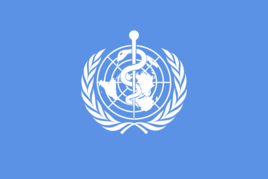Malaria is the mosquito bites or enter with Plasmodium blood and Plasmodium infection caused by insect borne infectious disease. Parasitic in the human malaria parasite there are four, namely Plasmodium vivax, Plasmodium malariae, Plasmodium falciparum and Plasmodium ovale. In our country is mainly of Plasmodium vivax and P.falciparum; other two rare in recent years, occasionally some cases of the foreign inputs. Different Plasmodium falciparum were caused by Plasmodium vivax, quartan malaria, Plasmodium falciparum and oval malaria. The disease mainly in the periodic law of attack, body chills, fever, sweating, long after several episodes, causes anemia and splenomegaly.
A larger portion of Africa is currently at high risk for malaria transmission than previously predicted, according to a new University of Florida mapping study.
Under future climate regimes, the area where the disease can be transmitted most easily will shrink, but the total transmission zone will expand and move into new territory, according to the study, which appears in the current issue of the journal Vector-Borne and Zoonotic Diseases.
By 2080, the study shows, the year-round, highest-risk transmission zone will move from coastal West Africa, east to the Albertine Rift, between the Democratic Republic of Congo and Uganda. The area suitable for seasonal, lower-risk transmission will shift north into coastal sub-Saharan Africa.
Most striking, some parts of Africa will become too hot for malaria.
The overall expansion of malaria-vulnerable areas will challenge management of the deadly disease, said lead author Sadie Ryan, an assistant professor of geography at the University of Florida who also is affiliated with UF’s Emerging Pathogens Institute.
Malaria will arrive in new areas, posing a risk to new populations, she said, and the shift of endemic and epidemic areas will require public health management changes.
“Mapping a mathematical predictive model of a climate-driven infectious disease like malaria allows us to develop tools to understand both spatial and seasonal dynamics, and to anticipate the future changes to those dynamics,” Ryan said.
Cerebral malaria, caused by the parasite Plasmodium falciparum transmitted by the Anopheles gambiae mosquito, is the most deadly form of the disease, killing around 584,000 people each year. Malaria can cause organ failure, unconsciousness, and coma, if left untreated, and is a major cause of decreased economic productivity in affected regions.
The study uses a model that takes into account the real, curved, physiological responses of both mosquitoes and the malaria parasite to temperature. This model shows an optimal transmission temperature for malaria that, at 25 degrees Celsius, is 6 degrees Celsius lower than previous predictive models.
This work will play an important role in helping public health officials and NGOs plan for the efficient deployment of resources and interventions to control future outbreaks of malaria and their associated societal costs, Ryan said.
Malaria prevention, refers to the protection of susceptible population including individual prevention and prevention of group. Individual prevention department of malaria area residents or short-term into malaria area a, to mosquito bites, preventing the onset or relieve the clinical symptoms and take protective measures. Population prevention is of high malaria, an outbreak of epidemic area or a large number of living in the endemic area for a long period of population, in addition to including containing individual prevention purposes, but also to prevent spreading. To according to the weak link in the route of transmission, choice of economic, effective, and easy for the masses of protective measures. Preventive measures are: control of mosquito vectors in drug prevention or vaccine to prevent.




